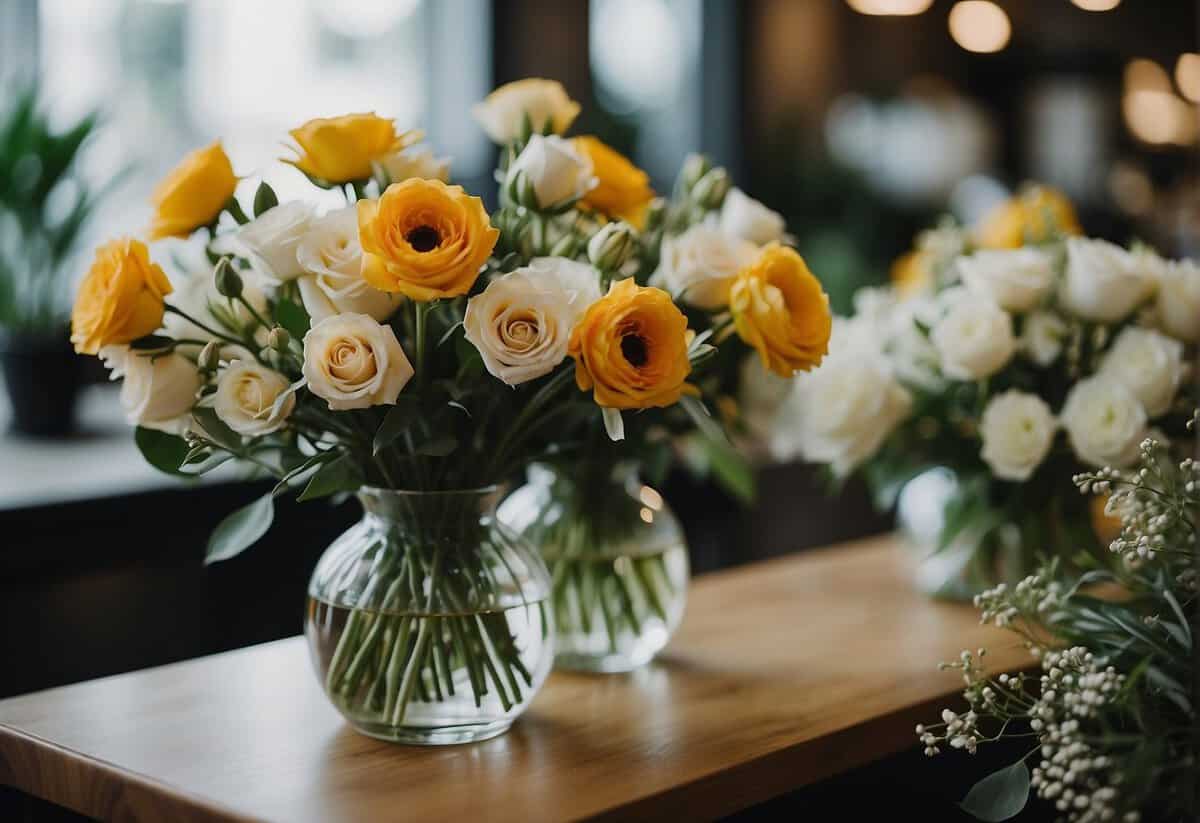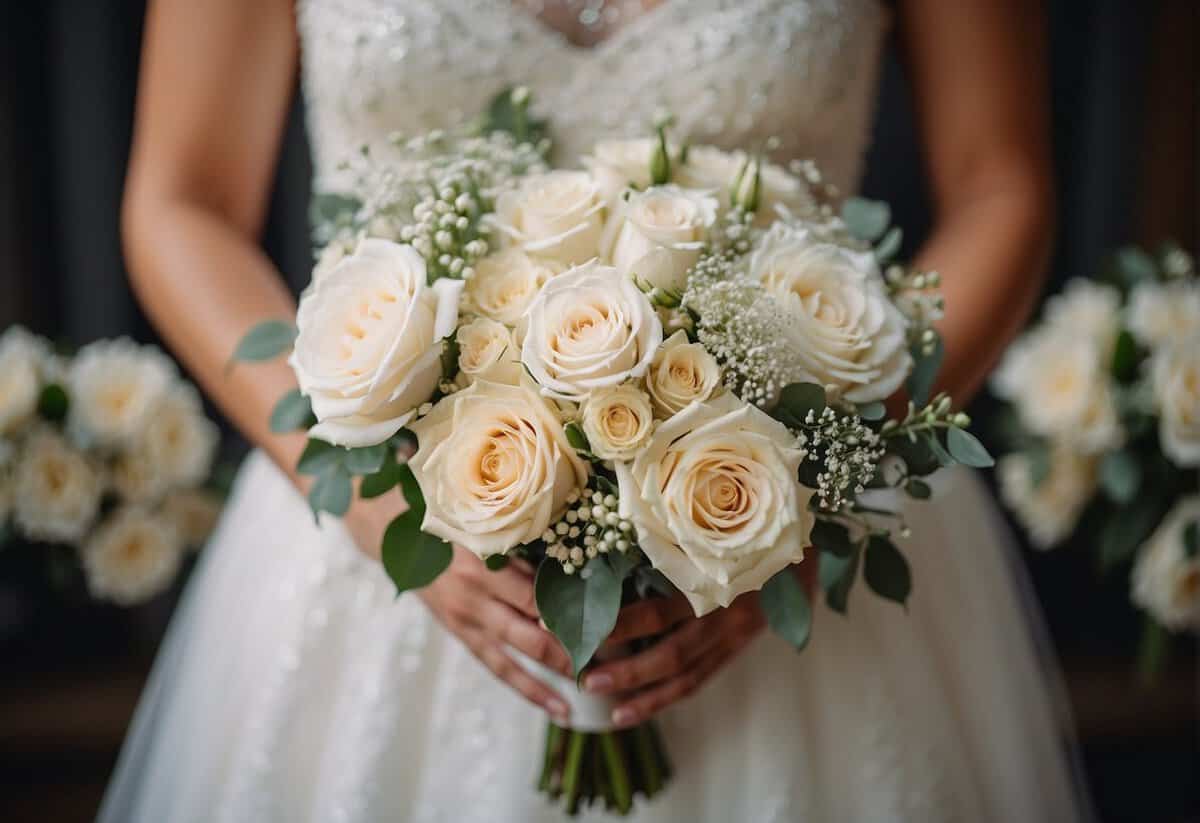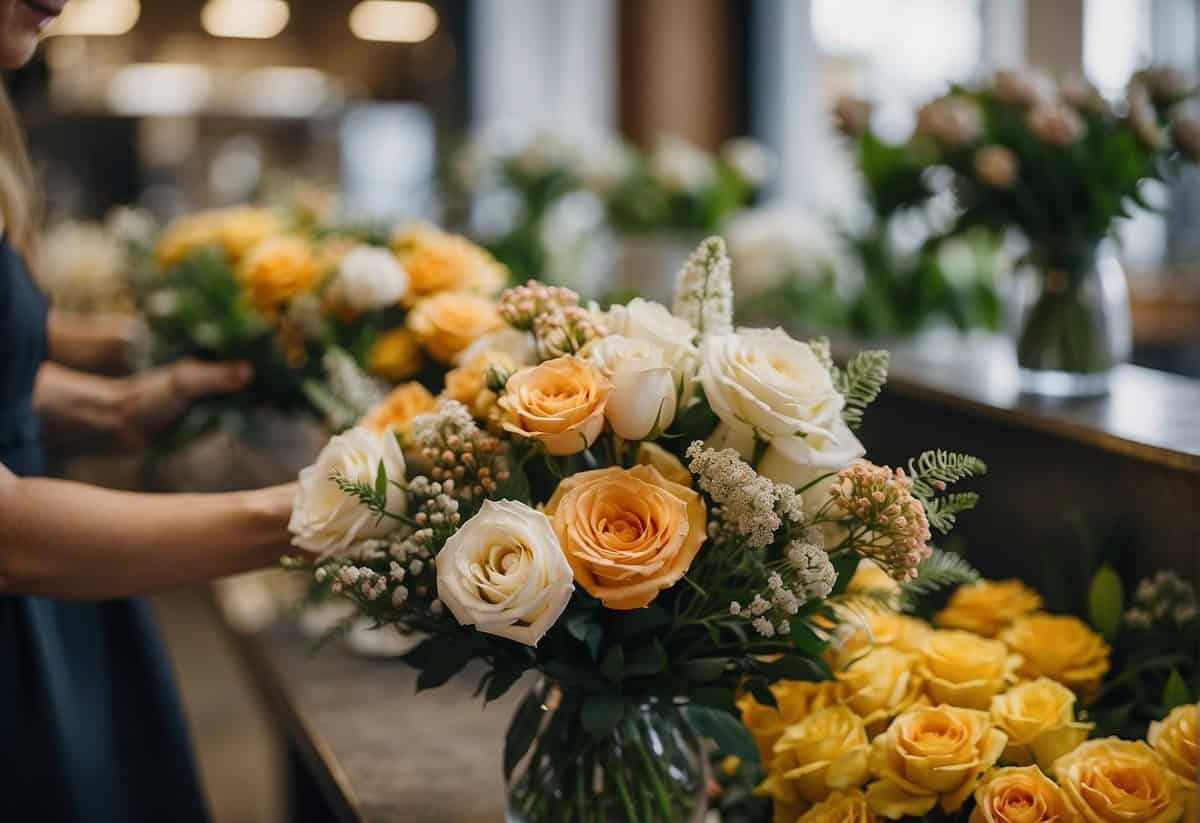Do Bridesmaids Pay for Their Bouquets? Unveiling Wedding Flower Etiquette
When preparing for a wedding, among the flurry of expenses and planning details, the topic of who pays for the bridesmaids’ bouquets often emerges. As a member of the bridal party, you may be wondering if the cost of your bouquet is something you’ll need to budget for. Generally, bridesmaids are expected to cover certain individual costs, but whether the bridal bouquet falls under this category can vary.

Traditionally, the bride takes on the expense of floral arrangements for the wedding, which typically includes bridesmaids’ bouquets. However, modern weddings see a range of practices, from brides covering all floral costs to bridesmaids purchasing their own bouquets. The decision often depends on the couple’s preferences, the overall wedding budget, and the financial situation of the bridal party as a whole.
Key Takeaways
- Bridesmaids may need to budget for their own wedding expenses, including bouquets.
- Brides typically cover the cost of all wedding flowers, but practices can vary.
- Financial considerations for all parties influence who pays for bridesmaid bouquets.
Understanding Bridesmaid Expenses

As a bridesmaid, navigating the financial commitment of your role is vital. You will encounter various expenses, from attire to pre-wedding events, so understanding what you’re expected to pay for is essential for a smooth experience.
What Bridesmaids Traditionally Pay For
Traditionally, you as a bridesmaid would be responsible for certain costs associated with the wedding. Here’s a breakdown of typical expenses:
- Dresses: You’re often expected to purchase your own dress. Elegance and style choice can vary, but the price tag is usually a personal expense.
- Hair and Makeup: On the day of the wedding, professional styling services might be on your dime unless the bride decides to cover this as a gift.
- Travel and Accommodations: If the wedding is out of town, you usually pay for your own travel and hotel stay.
- Accessories: Things like shoes and jewelry that complement the bridesmaid dress are typically bought by you.
For detailed insight, consider the guidance from The Knot on bridesmaid financial responsibilities.
Financial Commitment and Expectations
Being a part of the bridal party comes with a financial commitment that extends beyond personal attire and beauty preparations:
- Bachelorette Party: Costs can vary, but it’s standard for all attending bridesmaids to chip in for the festivities.
- Accommodations: If you’re traveling, it’s best to discuss room sharing and transportation to manage expenses effectively.
- Finances: Have an open discussion with the bride and fellow bridesmaids early on about the expected financial commitment.
Remember, although these traditions exist, every wedding is unique, and the bride might opt to handle some costs herself. For more details on the variations in financial expectations, Martha Stewart offers sound advice on what bridesmaids might expect to pay for.
The Bridesmaid Bouquet Cost Breakdown

When planning your wedding, understanding the costs for bridesmaid bouquets helps you allocate your flower budget effectively. Let’s examine what you might expect to spend and what factors come into play.
Average Cost of Bridesmaid Bouquets
The average cost of bridesmaid bouquets typically ranges from $65 to $125 per arrangement. Smaller and simpler posy bouquets might fall towards the lower end of the spectrum, often costing between $50 and $80. On the other hand, more elaborate styles, like cascade bouquets, could push your costs between $100 and $200 depending on the complexity and the types of flowers used.
Factors Affecting Bouquet Costs
Several factors can influence the cost of your bridesmaid bouquets:
- Types of Flowers: Premium flowers like peonies or orchids are pricier than standard roses or carnations.
- Geographic Location: Floral pricing varies by region, with larger cities often commanding higher prices.
- Hand-Tied vs. Pre-Arranged: Custom, hand-tied bouquets may cost more due to the labor involved.
- Season: Choosing flowers in season can reduce costs significantly.
Remember, your floral quotes will be unique to your wedding’s specific needs. It’s always best to discuss your vision and budget with your florist to ensure you get the most beautiful arrangements while maintaining control of your flower budget.
Who Pays for Bridesmaid Bouquets

When planning your wedding, understanding who traditionally covers certain costs can guide your budgeting and avoid potential misunderstandings. Being clear about financial expectations upfront, especially concerning the bridal party’s flowers, helps everyone involved to plan ahead.
Traditional Wedding Etiquette
Traditionally, the bride or the bride’s family is tasked with the payment of the bridesmaid bouquets. These floral arrangements not only complement the aesthetic of the wedding but also form a significant part of the bridesmaids’ ensemble. The maid of honor, who often has additional duties, might have her bouquet provided as a gift from the bride. In some cases, family members may step in to cover this cost to ease the financial burden on the bride.
Modern Trends and Personal Choices
In recent years, there’s been a shift towards a more flexible approach. Many bridal parties discuss costs like these openly, with bridesmaids sometimes paying for their own bouquets as part of their contribution to the wedding. This can be especially true if the bouquets are going to be kept as a keepsake. However, it’s essential for you to discuss this with your bridal party early on to avoid any confusion. The maid of honor can also assist in communicating these details to ensure that everyone’s on the same page.
Saving on Wedding Floral Expenses

When planning your wedding, balancing a beautiful aesthetic with your budget can be crucial, especially when it comes to floral arrangements. Knowing how to save on wedding floral expenses can ensure that your ceremony and reception look stunning without stretching your finances too thin.
Creative Ideas for Budget-friendly Arrangements
- Opt for Seasonal Flowers: Choosing flowers that are in season during the time of your wedding can drastically reduce costs.
- Incorporate More Greenery: Less expensive than most flowers, greenery can create a lush look for less. Consider options like eucalyptus or ivy to fill out bouquets and centerpieces.
- Use Larger Blooms: A few large blooms can have a big impact. Consider using flowers like hydrangeas to make your arrangements seem fuller without the need for as many stems.
- DIY Arrangements: If you’re crafty, consider making the arrangements yourself. Assemble bridesmaid bouquets or corsages with the help of friends or family.
- Repurpose Flowers: Use your ceremony flowers at the reception as well. Transferring arrangements from one location to the other can cut down on costs for additional blooms.
Roles of Wedding Florist and Planner
- Wedding Florist: Your florist can work wonders within your budget by suggesting cost-effective flowers that match your wedding theme. They have the expertise to recommend seasonal and budget-friendly alternatives to pricey flowers like roses.
- Wedding Planner: A savvy planner can help you save money through their network of vendors and knowledge of how to get the best deals. They might negotiate pricing or suggest creative ways to minimize floral expenses without compromising your vision.
By strategizing with your wedding florist and planner and exploring inventive, budget-conscious solutions, you can achieve a breathtaking floral backdrop to your wedding that aligns with your financial boundaries.
Frequently Asked Questions

When joining a wedding party as a bridesmaid, it’s important for you to understand the expenses that you may be expected to cover. Here’s a breakdown of common costs associated with being a bridesmaid.
What expenses are typically covered by bridesmaids in a wedding?
As a bridesmaid, you’ll often be responsible for your own attire, including the dress and any necessary alterations. It’s also common for bridesmaids to pay for their own bouquets, with costs varying based on the floral arrangement.
Who is responsible for the cost of hair and makeup for bridesmaids?
Hair and makeup costs can vary by wedding. Sometimes the bride covers this expense; other times, you as a bridesmaid might be expected to pay for your own beauty services on the wedding day.
What costs are associated with being a bridesmaid, including bridal showers and bachelorette parties?
Apart from attire, being a bridesmaid may involve additional costs such as hosting or contributing to the bridal shower and bachelorette party. These events can range significantly in cost depending on the level of extravagance.
Is the maid of honor expected to cover specific costs compared to other bridesmaids?
The maid of honor often incurs extra expenses since they typically take a lead role in organizing pre-wedding events and may contribute more to the bridal shower or bachelorette party.
Are there traditional expenses that bridesmaids should be prepared to pay for?
Traditionally, bridesmaids should be prepared to cover the cost of their dress and personal accessories, travel expenses for the wedding location, and possibly a share in pre-wedding festivities.
What should bridesmaids expect in terms of costs for their attire and accessories?
Expect to pay for not only your dress but also any matching accessories the bride requests, such as shoes or jewelry. These expenses can add up, so it’s wise to discuss budgets early on with the bride.

